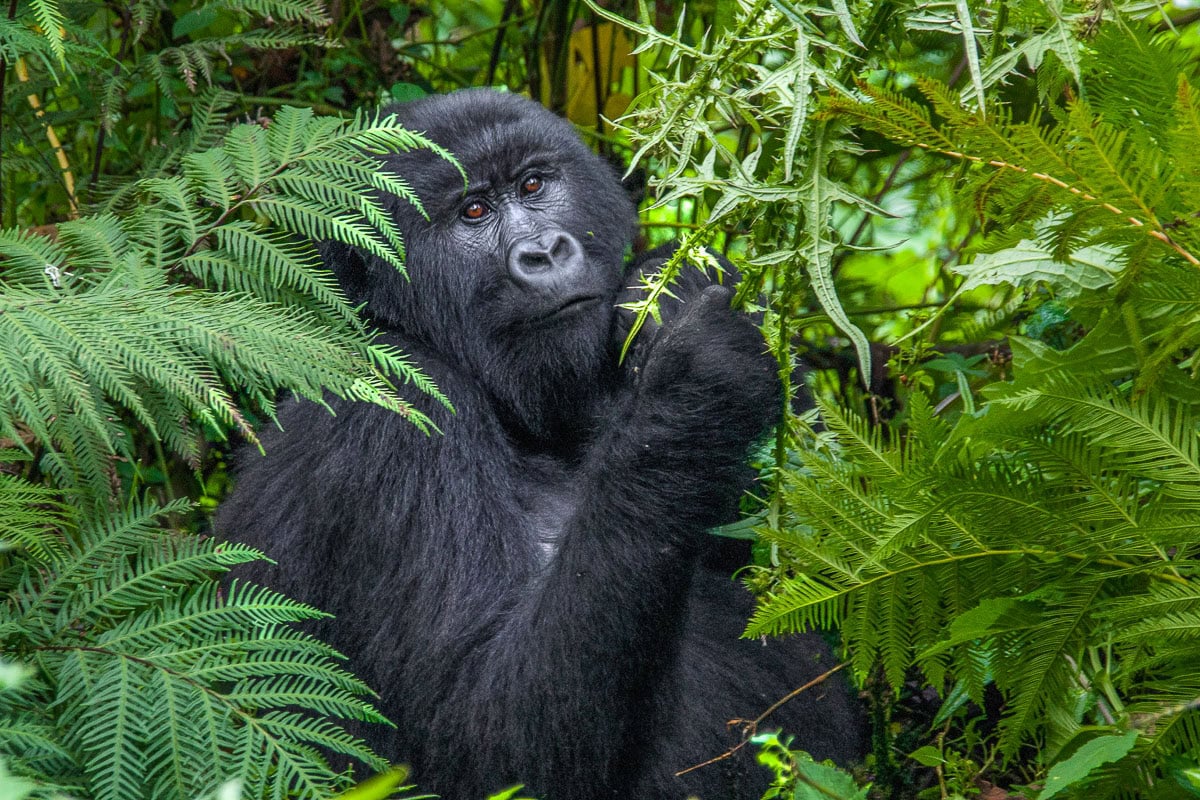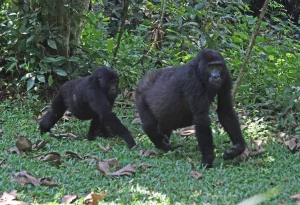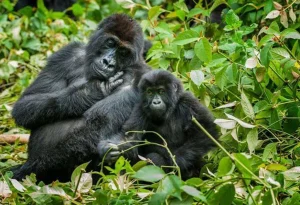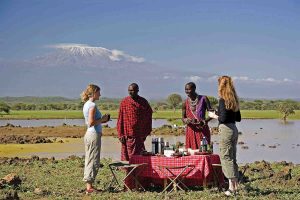How Gorilla Habituation Works in Uganda
The Uganda Wildlife Authority began gorilla habituation in January 2014 in addition to the well-liked gorilla trekking experience in Bwindi. You can only conduct this activity in Bwindi Forest! Volcanoes National Park in Rwanda, Virunga National Park in the Eastern Democratic Republic of the Congo, and Mgahinga Gorilla National Park in Uganda are among the other areas of the Virunga Conservation Area where gorillas are not available for habituated experiences. How Gorilla Habituation Works in Uganda
Travelers who wish to participate in the experience must reserve a gorilla habituation permit through a licensed tour operator, which can also arrange other gorilla safari arrangements. The reservations office of the Uganda Wildlife Authority can also be reached by mail.
Although gorilla habituation and permit booking are done year-round in Bwindi Forest, we advise making reservations in advance. The cost of one habituation permit, which includes park admission costs, is $1,500 per person. In contrast to an hour-long gorilla trekking experience, you are assured to spend four hours with gorillas after your permit has been booked.
Habituation Process
According to the Uganda Wildlife Authority (UWA), two gorilla families—Bikingi and Bushaho—are undergoing the process of habituation. They are situated in the Ruhija gorilla tourism sector, which is south of Bwindi Impenetrable Forest National Park. From Kampala, Ruhija can be reached by road in 8–10 hours, while from Queen Elizabeth National Park, it takes 4 hours. Those who are pressed for time might take advantage of the available scheduled charter flights. You must at least spend the night close to the Ruhija area, even if you are flying. A variety of lodging options are available, and you can unwind at your lodge long enough to get ready for demanding hikes. The adventure starts early in the morning.
Only four visitors are permitted to spend four hours watching gorillas, not including time spent looking for them. Gorillas remain unstable and either wild or semi-habituated. Although how you choose to view them depends on the mood of the day they are found. Researchers, guides, and trackers are knowledgeable about the ethics of gorilla behavior. And may provide you with an unforgettable gorilla habituation experience.
At the Ruhija Gorilla Center, you typically start with a briefing from the guides before being accompanied by rangers on a stroll into the forests. Researchers, guides, and trackers assist and involve tourists in the habituation process once gorillas are found. For four hours, you will watch, take pictures, and discover how gorilla behavior changes in response to human presence. You receive a gorilla habituation experience certificate for your lifelong memories when you return from the jungle.
What is the Gorilla Habituation Process?
Gorilla habituation is the process by which researchers, a small number of tourists, and trackers repeatedly train wild gorillas without threatening or rewarding them. Instead, they use neutral actions that mimic their natural wild status, such as chewing vegetation, mimicking their vocalizations, or walking on their knuckles, which reduces the gorillas’ fear of humans. It is done every day, and depending on how naturally the gorillas adapt to not seeing humans as dangers. It may take three years or less for them to fully become accustomed to gorilla trekking.
By habituating, gorillas can pay for their conservation, given the limited funds for conservation. And also promote the economic development of the local communities surrounding Bwindi Impenetrable Forest National Park. This is a way to preserve gorillas and their habitat, which are endangered by poaching, habitat loss, and the spread of harmful diseases.
In addition to being a once-in-a-lifetime wildlife encounter worldwide. It provides researchers and tourists with a profound grasp of gorilla social and ecological behavior.
How can I reserve a gorilla habitation experience?
Only four people are allowed to participate in this event each day; therefore, it’s crucial to reserve your permits in advance. Gorilla habituation licenses are available through a local tour operator and cost just $1500 per person.
For the low season, we recommend making reservations for gorilla habituation permits at least three months in advance of the activity date, and for the high season, at least six months in advance.
The Ideal Time to Visit a Gorilla Habituation
The two dry seasons—June to August and December to February—are the ideal times to visit Bwindi because of the generally comfortable weather, with highs of 20 to 25°C. Nonetheless, tourists should always be ready for rain because showers can occur at any time of year. The most rainfall occurs during the rainy season (March to May), which can make trekking more difficult but also provides better conditions for photography. The park is enlivened by the dark ambiance created by the mist and rain.
The Ugandan Gorilla Habituation Age Limit
The gorilla habituation experience requires participants to be above 15 years old. This age restriction makes sure that guests are able to follow the safety guidelines. And be physically fit enough to hike into the forest and interact with the gorillas. How Gorilla Habituation Works in Uganda
Accommodations for Habituation
Near Bwindi, there are a number of lodging alternatives, from opulent to more reasonably priced. Top-rated lodges include Rushaga Gorilla Haven Lodge. Gorilla Safari Lodge and Rushaga Gorilla Camp, which offer luxurious amenities and breathtaking views of the mountains. For a more affordable option, stay at Four Gorillas Lodge, which still offers excellent service and lovely surroundings.




